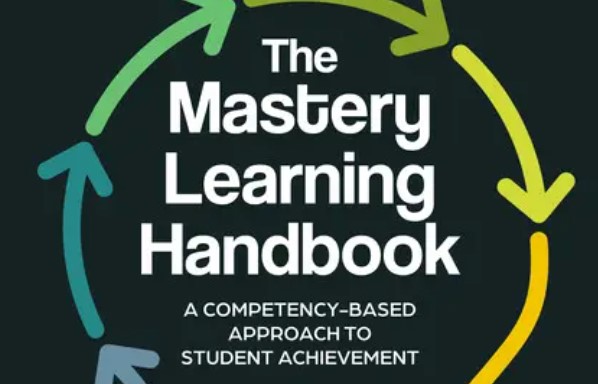Flipped Learning Pioneer Examines Mastery Learning
Flipped learning expert Jon Bergmann provides a blueprint for educators interested in mastery learning.

Flipped classroom pioneer Jon Bergmann’s new book, The Mastery Learning Handbook: A Competency-Based Approach to Student Achievement, serves as a guide for teachers looking to embrace the mastery learning pedagogy.
While flipped learning is not essential to mastery learning, Bergmann says the two pedagogies work well together and he utilizes both as a science teacher at Houston Christian High School. He also advises other schools in implementing both approaches as a sought-after educational consultant.
The Mastery Learning Handbook was released in October 2022 and provides a blueprint for educators on how to plan for and implement mastery learning in their classrooms.
Mastery Learning Doesn’t Stigmatize Slow Learners
“We teach kids that if you learn fast, you're smart, and if you learn slow you’re dumb,” Bergmann says. “I think that's a false statement. But that is basically the way education is set up. Mastery helps alleviate that problem because we're going to honor kids who learn slow. Slower doesn't mean you can't learn, it's just you learn slower. So why do we expect all kids to have everything mastered on Tuesday when the test is?”
However, he says educators should remember that learning at a different pace isn’t the same as learning at your own pace. “If students learn at their own pace, some won't have a pace,” he says. “So you have to give them some kind of a calendar so that they can move through at a reasonable pace.”
Mastery Learning Allows Multiple Chances for Success
Much like a new driver who takes their driver's test and fails is given the opportunity to retake the test, mastery learning students often are given multiple opportunities to prove they have learned course material.
In his classes, Bergmann manages this with the help of technology by creating large test banks. Each student gets a randomly generated unique test each time.
Tools and ideas to transform education. Sign up below.
However, multiple attempts do not mean unlimited attempts. For example, some of his mastery learning colleagues create three different printed tests on the same material or give students two or three opportunities to pursue a project or paper.
“Most students don’t want to take a fifth and sixth test,” he says. “Three seems to be kind of the max for most kids. There's an exception or two who might need a fourth [try].”
Usually, no more than three attempts are necessary for the student to demonstrate mastery. “If they're struggling on number two, we're going over this in some detail, so that they're successful on their third attempt,” Bergmann says.
Mastery Learning is Not All Or Nothing
Educators interested in incorporating mastery learning into their classes can start small with perhaps a mastery unit or two, or a mastery component to a unit. This is a good way for educators to dip their toes in the pedagogy without being overwhelmed, Bergmann says.
Certain portions of classes in some topics may not lend themselves to the different-paced learning at the heart of mastery. “If you’re studying Macbeth, then one of the things you want to do is have Socratic dialogue or some kind of dialogue that's whole group, so you don't want the kids on different pages. You do need them all having read chapter eight, or whatever, so that they can have a deep discussion about the protagonist, the antagonist,” he says. “But if you're teaching a skill, there's nothing better than mastery, and all of us as teachers are teaching skills in what we do, some to more extents than others.”
Mastery Learning is Hard to Implement From The Lectern
A full-on flipped classroom is not a precursor to incorporating mastery, however, incorporating mastery effectively often means embracing some elements of flipped teaching philosophy.
When Bergmann works with schools as a consultant, one of the first things he does is advise educators to eschew exclusively lecture-based classes. “I need to get the teachers away from the front of the room,” he says. “Because mastery learning can't happen if you're lecturing every day.”
Doing this requires an educator who is well-versed in the topic they are teaching and is willing to embrace the challenges and joys of switching gears while working with different students. “I see my job as a wanderer,” Bergmann says. “I wander around the room and help kids. And some kids are on this topic, and some are at this topic, and I've got to sort of flip my brain 100 times in a class period because each kid is at a slightly different level.”
Erik Ofgang is a Tech & Learning contributor. A journalist, author and educator, his work has appeared in The New York Times, the Washington Post, the Smithsonian, The Atlantic, and Associated Press. He currently teaches at Western Connecticut State University’s MFA program. While a staff writer at Connecticut Magazine he won a Society of Professional Journalism Award for his education reporting. He is interested in how humans learn and how technology can make that more effective.

